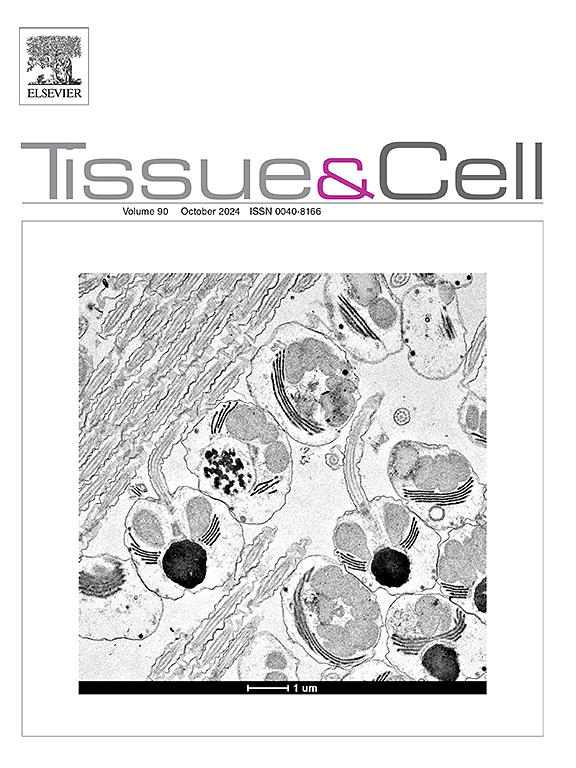Codonopsis pilosula polysaccharides attenuate lipid accumulation and inflammatory response in the NAFLD mouse by regulating AMPK/ACC/SREBP1 signaling pathway
IF 2.7
4区 生物学
Q1 ANATOMY & MORPHOLOGY
引用次数: 0
Abstract
This study investigated the effects of Codonopsis pilosula polysaccharides (CPP) on nonalcoholic fatty liver disease (NAFLD) induced by a high-fat diet in mice and its underlying mechanisms. Mice were divided into six groups: control, model, fenofibrate, and three CPP dosage groups (300, 200, 100 mg/kg). CPP reduced liver lipid accumulation, serum TC, TG, LDL-C, ALT, AST, MDA, IL-6, and TNF-α levels while increasing HDL-C, SOD, and GSH-Px levels (P < 0.05). Histopathological analysis confirmed decreased lipid deposition. Western blot showed CPP enhanced AMPK and ACC phosphorylation, while RT-PCR revealed reduced expression of SREBP1 and its target genes. In PA-induced HepG2 cells, CPP effects were reversed by AMPK inhibition. These findings demonstrate CPP’s potential to mitigate hepatocellular lipotoxicity, oxidative stress, and inflammation in NAFLD through the AMPK/ACC/SREBP1 pathway, offering a promising therapeutic approach.
党参多糖通过调节AMPK/ACC/SREBP1信号通路减轻NAFLD小鼠脂质积累和炎症反应
本研究探讨党参多糖(CPP)对小鼠高脂饮食诱导的非酒精性脂肪性肝病(NAFLD)的影响及其机制。小鼠分为6组:对照组、模型组、非诺贝特组和3个CPP剂量组(300、200、100 mg/kg)。CPP降低了肝脏脂质积累、血清TC、TG、LDL-C、ALT、AST、MDA、IL-6和TNF-α水平,同时提高了HDL-C、SOD和GSH-Px水平(P <; 0.05)。组织病理学分析证实脂质沉积减少。Western blot显示CPP增强了AMPK和ACC的磷酸化,而RT-PCR显示SREBP1及其靶基因的表达降低。在pa诱导的HepG2细胞中,CPP效应被AMPK抑制逆转。这些发现表明,CPP有可能通过AMPK/ACC/SREBP1途径减轻NAFLD的肝细胞脂肪毒性、氧化应激和炎症,提供了一种有前景的治疗方法。
本文章由计算机程序翻译,如有差异,请以英文原文为准。
求助全文
约1分钟内获得全文
求助全文
来源期刊

Tissue & cell
医学-解剖学与形态学
CiteScore
3.90
自引率
0.00%
发文量
234
期刊介绍:
Tissue and Cell is devoted to original research on the organization of cells, subcellular and extracellular components at all levels, including the grouping and interrelations of cells in tissues and organs. The journal encourages submission of ultrastructural studies that provide novel insights into structure, function and physiology of cells and tissues, in health and disease. Bioengineering and stem cells studies focused on the description of morphological and/or histological data are also welcomed.
Studies investigating the effect of compounds and/or substances on structure of cells and tissues are generally outside the scope of this journal. For consideration, studies should contain a clear rationale on the use of (a) given substance(s), have a compelling morphological and structural focus and present novel incremental findings from previous literature.
 求助内容:
求助内容: 应助结果提醒方式:
应助结果提醒方式:


